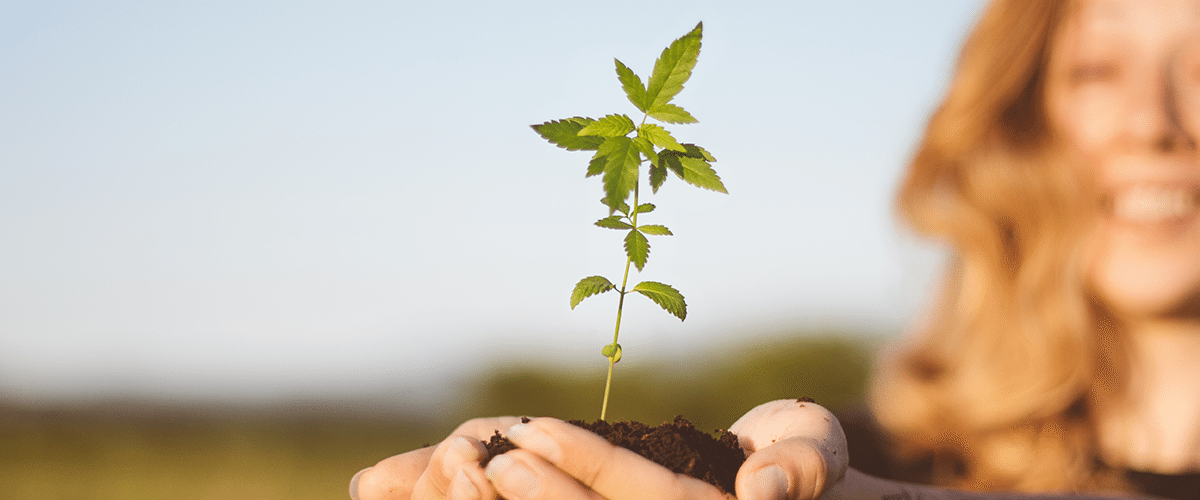[vc_row][vc_column][vc_column_text]
The Minnesota Department of Agriculture approved a huge growth in production in the second year of the state’s pilot program, suggesting the state is exploring hemp as a viable crop option.
Minnesota’s Department of Agriculture hemp pilot program will grow exponentially in its second year. The program started last year with seven growers cultivating 37 acres, according to Alpha News. This year, it will reportedly jump to 42 growers covering 2,100 acres.
“It’s certainly a big jump, we weren’t sure what to expect,” Minnesota Department of Agriculture Assistant Commissioner Andrea Vaubel told Alpha News. “I think it’s helping that folks are starting to learn the difference between industrial hemp and marijuana.”
Hemp refers to the non-psychoactive varieties of Cannabis sativa L. that are used to produce foods, cannabidiol (CBD) oil nutritional supplements, body care products, textiles, paper, canvas, and an array of other products. The highly useful crop was at one point a staple in American agriculture, and was grown legally in Minnesota at the end of World War II to help produce ropes and canvas as part of the war effort. Eventually, hemp was lumped in with its cannabis family member marijuana and banned in 1937.
The sustainable crop is gradually returning as a domestic agricultural commodity since President Obama signed the Farm Bill in 2014 to allow states to establish hemp pilot and research programs. Over 30 states have since passed legislation related to industrial hemp and nearly 10,000 acres of hemp were planted in the U.S. in 2016. A few, like Minnesota, have even moved beyond pilot and research intentions and implemented programs that allow farmers to pursue commercial ambitions to take advantage of the United State’s $573 million hemp market.
“We really want to understand if this is a viable crop for Minnesota, and are there markets out there for farmers to capitalize on,” Vaubel told the Star Tribune. “So far we think there are.”[/vc_column_text][/vc_column][/vc_row][vc_row][vc_column][vc_single_image image=”17298″ img_size=”1200×250″ onclick=”custom_link” img_link_target=”_blank” link=”https://www.medicalmarijuanainc.com/why-do-we-refer-to-hemp-as-industrial-hemp/”][/vc_column][/vc_row][vc_row][vc_column][vc_column_text]Minnesota farmers interested in cultivating hemp must first apply for a license with Minnesota’s agriculture department. The application must include a detailed plan of the growing conditions, the intentions for the crop, and a background check of all involved parties. Approved farmers must obtain their hemp seeds from the Department of agriculture and then submit reports on their growing, harvesting, processing, and selling successes and failures.
The pilot program’s goal is to study the growth, cultivation and marketing of hemp. In its initial year, growers were met with severe weather that caused growing difficulties for some farmers.
“It was the first year so it definitely is still in the process of establishing itself. We had a couple of folks who were just total washouts,” Vaubel said. “But some of our folks were able to harvest some have branded products that they’re selling in shops.”
The University of Minnesota has been approved to participate in the program. It intends to grow hemp in its fields in Rosemont, Crookston, Morris, and possibly on the White Earth reservation.
“We’re going to raise 12 industrial hemp varieties in an experimental design that will allow us to compare how they perform here in Minnesota and in different soil types and locations,” University of Minnesota plant and microbial biology professor George Weiblen told the Star Tribune.
To learn about the difference between hemp and marijuana, read our article outlining the two here. Visit our news feed to keep up with the latest developments in the legal cannabis industry.[/vc_column_text][/vc_column][/vc_row]






